Scottish Beef Supply Chain Map





Farming of beef cattle
Livestock haulage
The Scottish beef supply chain includes calf producers, suckler beef producers, store producers and finishers, livestock procurement businesses for deadweight sales, auctioneers, hauliers, abattoirs, primary and secondary meat processors
Slaughter and dressing
Rendering
Primary processing (carcass halves/quarters, boning, preserving, chilling and packing)
Added value processing (cuts, steaks, mince, burgers, etc.; smoked, dried and salted products)
Edible by-products (5th quarter/offal)
10 livestock market businesses
Deadweight Procurement
E.g., Border Livestock Exchange, Farmstock
Abattoir and Meat Processing
large
ABP Perth, AK Stoddart, Dunbia, McIntosh Donald, Scotbeef, Woodheads
small
Millers of Speyside, PR Duff, John Scott Meat
Scotland’s beef herd (incl. calves) was ~1.474m cows according to the 2023 Agri Census
97.9% of Scottish beef cattle are Farm Assured
In 2021, the beef sector represented 26,5% of Scottish agricultural output and is worth £706m p.a.
Prime cattle slaughter fell by 3.2% to 370,100 heads in 2022
Abattoir output in 2021 from beef, offal and hides, was £668m
>3k people are employed in primary processing of red meat. Red meat sector employs ~50k people in farming and processing
65% of revenue for
Scottish beef processors is generated from rest of UK sales
Scottish beef exports generated £53m in 2022

Deadweight procurement agencies, auction marts, performance feedback
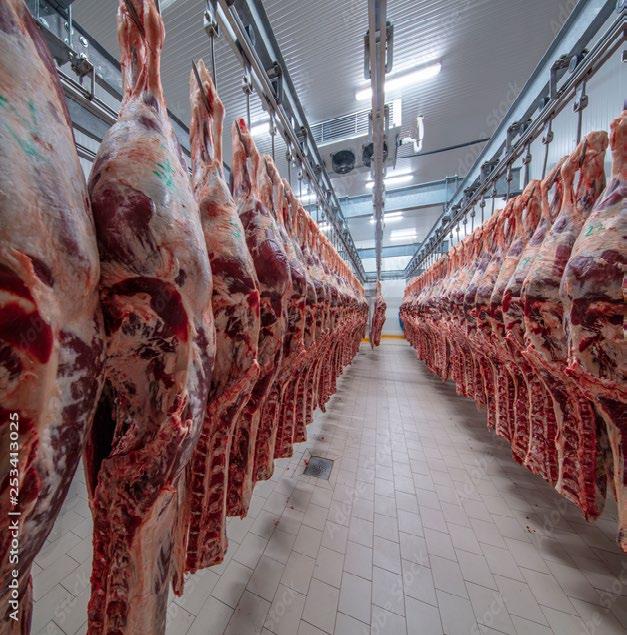
Full butchery cuts, processed products (e.g., joints, steaks, mince, burgers, pies), meals, chilling, blast freezing and packing

Calf producer farmers – breeding and rearing; Finishing farmers; Producers and finishers

Slaughter, dressing, primal cuts, fifth quarter offal products, chilling, blast freezing and packing

Marketing of fresh, chilled and frozen cuts of beef, processed beef products and ready meals - in UK and export wholesale, retail and foodservice markets

1/5 of establishments in Scotland had cattle in 2021
There are ~9,580 holdings with female beef cattle, 8,662 with male beef cattle and 8,559 with calves
At farm level, at 174%, Scotland is more than self-sufficient in beef
68.8% of the cattle breeding herd in Scotland is beef cattle ; 30% is dairy – the highest ratio of beef to dairy in Europe
Decline in Scotland's beef herd showed a further 3.3% reduction in December 2022, probably due to rising production costs and uncertainty around future agricultural policy
Cattle population in Scotland in June 2022 was 1.47m, down 3% on female beef cattle compared to the 5-year average
The average herd size is 49 cows with 79% of cattle held in holdings of at least 50 cows
Dumfries and Galloway remains the area with the larger number of beef cows (~120,075) followed by NE Grampian (~105,236)
Calf registrations decreased by 0.2% for the third year in a row, to 562k
Angus and Limousin remain the main breed groups
Farm output from beef was worth £849m in 2020, accounting for 24.4% of Scottish agricultural output and 14.4% of UK agricultural output
Until now, CAP subsidies have formed an important part of farm income
17 abattoirs slaughtered cattle in Scotland in 2022 (20 with cutting plants)
75.1% of the kill takes place in the largest five abattoirs
At abattoir level, Scotland is more than self-sufficient in beef at 153%
Prime cattle slaughter fell 3% to 370,100 heads in Sottish abattoirs in 2022, while the total number of cattle was 448,770
Total beef output slipped to 163,300t (-0.6%). The value of abattoir output from beef and offal reached £733m in 2022, with £24m from hides
Age at slaughter for males changed to more males slaughtered at 16-26 months (57.1%) while for females the share killed at 24-29 months increased to 31.4%
The average deadweight cow price in Britain was ~50% more expensive in 2022 than the five-year average
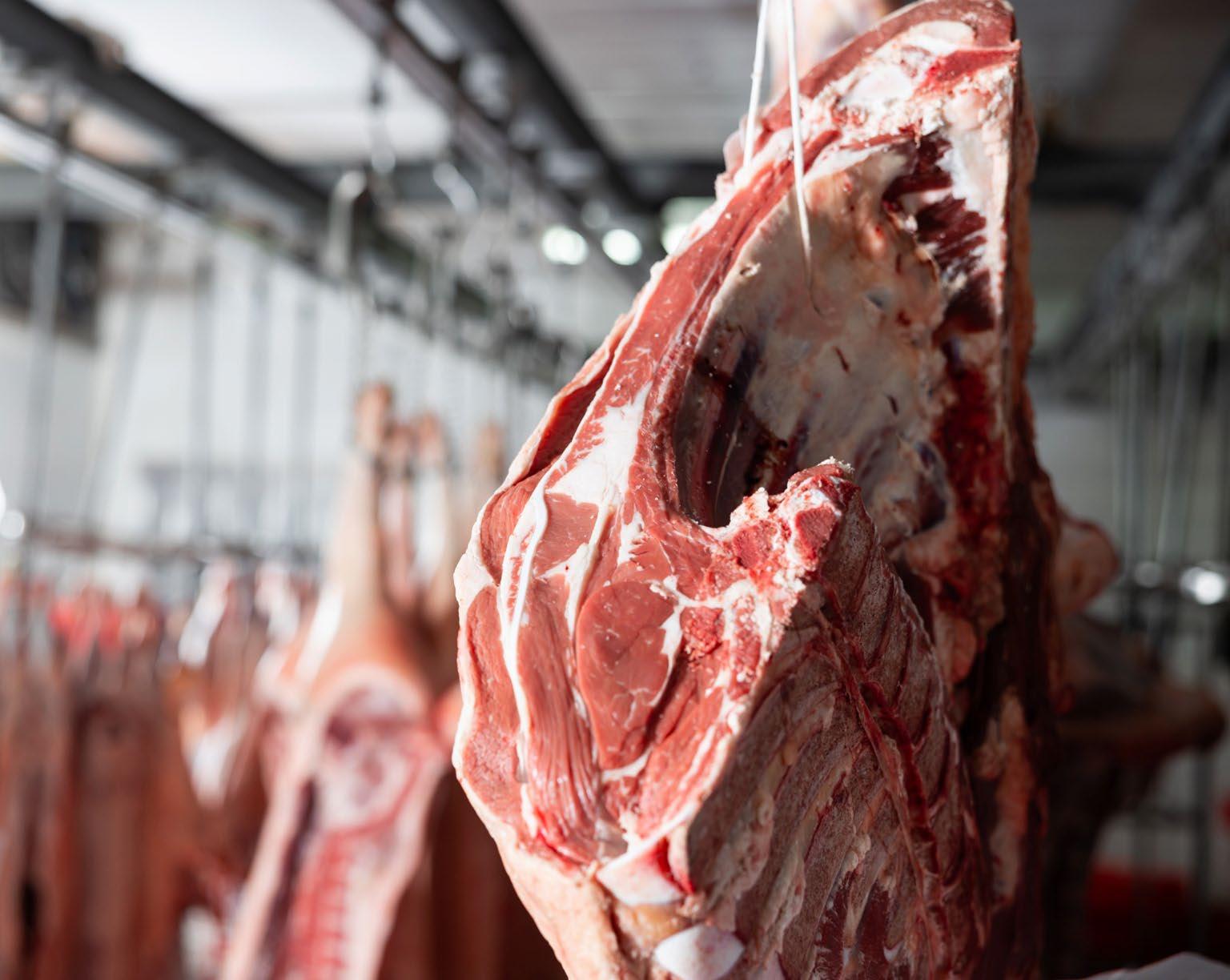
Slaughter, Primal Cuts, Full Butchery, Processed Products, Other Added Value 5th Quarter/Offal
The processing sector operates on low profit margins (0.2 to 1.6% in large abattoirs, much less in medium to small ones)
Sales distribution of primary production beef, by product category in 2022 kept boneless cuts as the main product for beef processors
For meat processing in the UK, 54.4% of the industry product segment comes from beef and veal
For meat product manufacturing in the UK, 23.8% of products manufactured are sausages, 17.8% bacon, 17.6% hams, 10% beef or veal and 18.5% other
A few retailers cut and process Scotch Beef products in other parts of the UK and some firms from Scotland add value, but it is not clear if they buy from Scotland. There are exceptions, such as Tarbert Fine Foods (Brown Brothers)
Variability of age at slaughter and carcass weights going to the same chilling regime causes impact on quality
The most concerning factors for meat processors are ensuring ongoing supply of beef, price impact on the consumer sales, eating quality and environmental impact of meat

Slaughter, Primal Cuts, Full Butchery, Processed Products, Other Added Value
5th Quarter/Offal
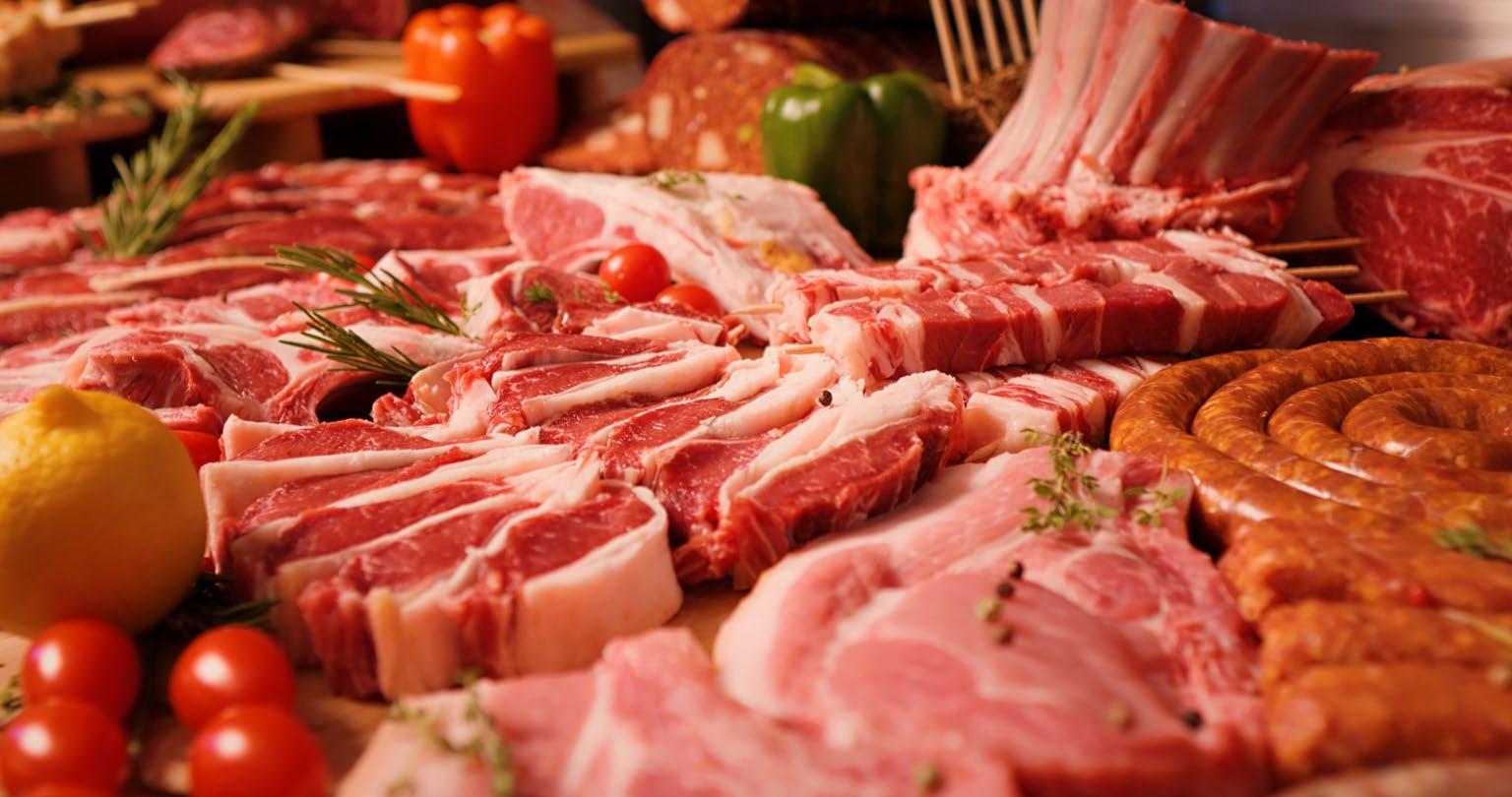
UK and Export
Wholesale, Retail, Foodservice, Food Manufacture
Beef prices increased by~20% in the year to Aug 2023 (AHDB)
Sales outwith Scotland to the rest of the UK generated 65% of sector revenue at £436 in 2022, while sales in Scotland represented 27% of the total sales (£179m)
An above-average beef consumption in Scotland vs the rest of the UK continues with 19.2kg/person/year (1.5% decrease compared to 2021)
UK supermarkets are the largest customers for red meat processors (52.4%), followed by food manufacturers (27%), foodservice (12%), wholesalers (3.2%) and butchers (4.5%)
For meat wholesaling, beef and veal represent 35.7% (£4.5bn), pork 12.4% (£1.6bn), lamb and mutton 7.4% (£933m), chicken and poultry 44.1% (£5.6bn)
For meat product manufacturing, sausages represent the biggest revenue (23.8%), followed by bacon (17.8%), pates and pastes (12.1%), beef and veal (10.2%), other products (18.5%), ham and other salted/dried or smoked pork (17.6%)

UK and Export
Wholesale, Retail, Foodservice, Food Manufacture
Scotland accounts for 9.5% of GB beef sales
Beef mince was the only product to increase sales in value and volume in 2023
Scotland pays cheaper price for beef vs the wider UK market (2% cheaper), mostly due to promotion
In Scotland, steaks have 9.8% share of beef products, burgers 10.5%, other cuts 15.7% and fillets 21.5%
In 2022, in Scotland the volume of red meat purchased fell by 8.9% driven by a decline in purchasing frequency and decrease in volume per trip. The average price per kg increased 6.6% to £8.93/kg
Scottish beef exports represent 8% of the total sales value at £53m
Beef imports to the UK increased to 15% in 2022 or 234,307t, mainly fresh and frozen boneless cuts
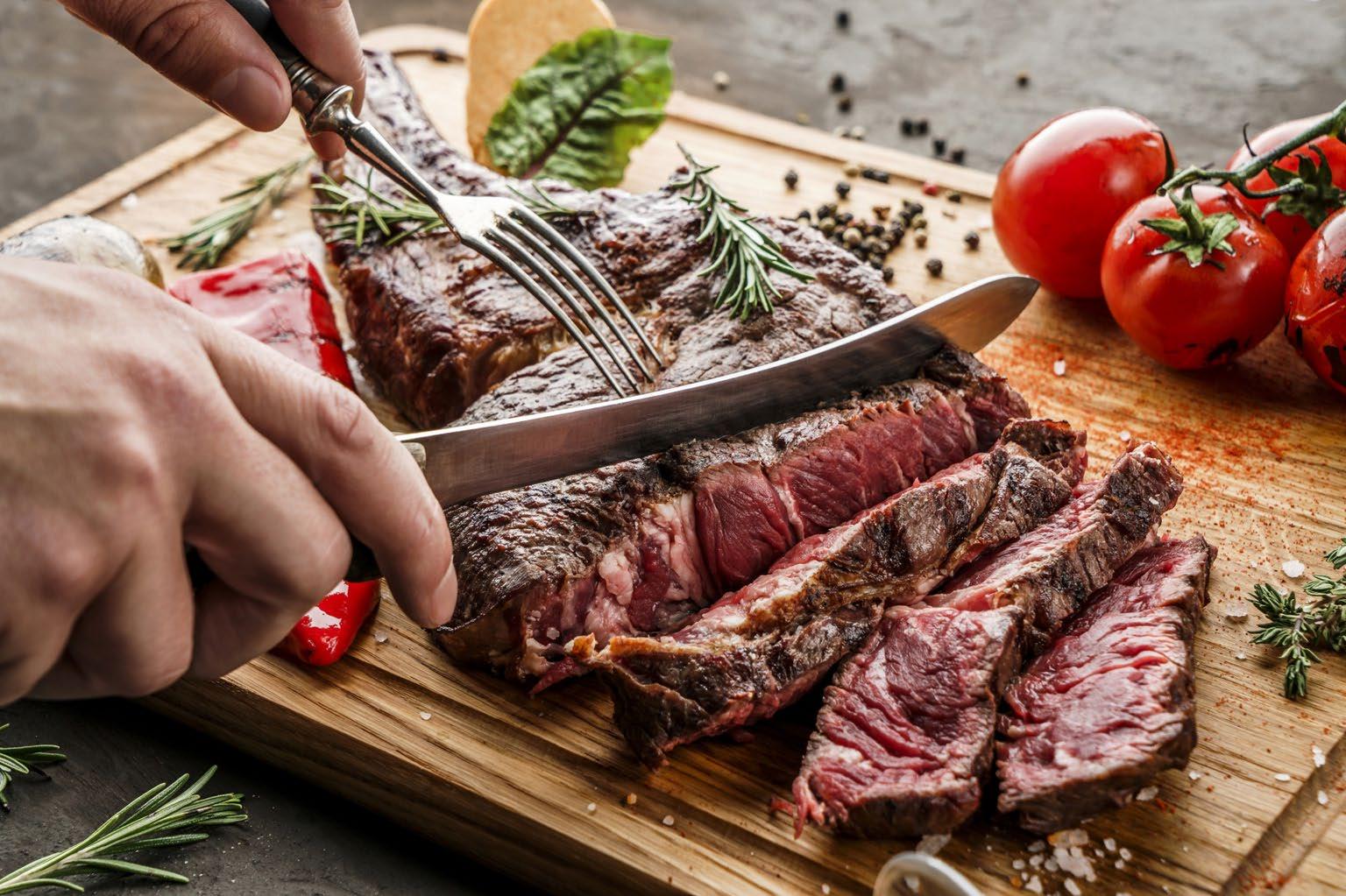
Scotch Beef PGI status and whole chain assurance
Farm accreditation is valued by consumers and plays an important role in decision making for purchases
Reputation of Scotch Beef, Scot PGI helped deliver additional £30-40 per animal over the last 10 years
Beef processing self-sufficiency is above 100% in farming and processing
Proposed Medicine Hub for sheep and cattle
Electronic traceability systems. BCMS change of cattle data to ScotEID
The industry has been subject to tighter regulations, labelling rules and daily animal welfare checks
The proportion of Scottish households buying beef remains slightly higher than in the rest of GB
Meat meals still dominate the market on prepared meal products despite the growth of meat free products
In 2022, 2/3 farmers reportedly took action to reduce GHG from farm
Scotland’s beef herd is continuing to decline, and calving rates are lower in Scotland than rest of UK and Ireland
Payment for meat does not incentivise quality, only yield. Around 1/3 Scottish carcasses (mainly steers) exceed customers’ target weight range specification
Heavy reliance on non-UK labour
Supermarket price wars squeezing producer and processor profits
In some instances, beef is delivered to processing and packing sites in the UK and exported or returned to Scotland in a shelf-ready pack for sale here
Low profitability of the slaughter/primary processing sector and cost of dealing with “fifth quarter”
Scottish processors export less beef than the UK as a whole and more is exported as UK beef rather than Scotch Beef
Negative consumer perception and media portrayal of the red meat industry
Due to increasing demand and supply chain shortages, some supermarkets removed their 100% British beef commitment

Broaden customer base in both UK and export markets to reduce price pressure risks, increase premiums and achieve carcass balance
Greater automation to combat labour shortages and improve efficiency
Technological research focusing on cost reduction, animal welfare, productivity and environmental management
The Government has indicated that standards will be kept high in future trade deal negotiations to protect the domestic industry
Long term agreements for frozen beef exports
Each QA member of QMS will engage in an emissions reduction programme
Ban on exporting male dairy calves brings supply chain opportunities
Use R and D to build distinctiveness (product innovation in food manufacturing)
New trade deals like Trans-Pacific trade partnership (July 2023)
Increased input and production costs
Labour shortages – on farm, in processing sector and ancillary services, such as vets (up to 23.6% for vets and 5.8% for a Meat Hygiene Inspector)
Changing export certification and verification requirements, increased shipping costs, timing uncertainties and custom check delays
Pricing pressures from UK supermarkets reducing profit margins
Competition from alternative meats/proteins
Forestry developments in farmland, impact of monocultives on biodiversity, ecology and employment
Uncertainty around CAP replacement funding
Increasing consumer concerns over health, environmental impact and affordability reducing demand for red meat
Changes in the level of real household disposable income, affecting the amount available to spend on meat (food price inflation reached 13.1% in Aug 2022)
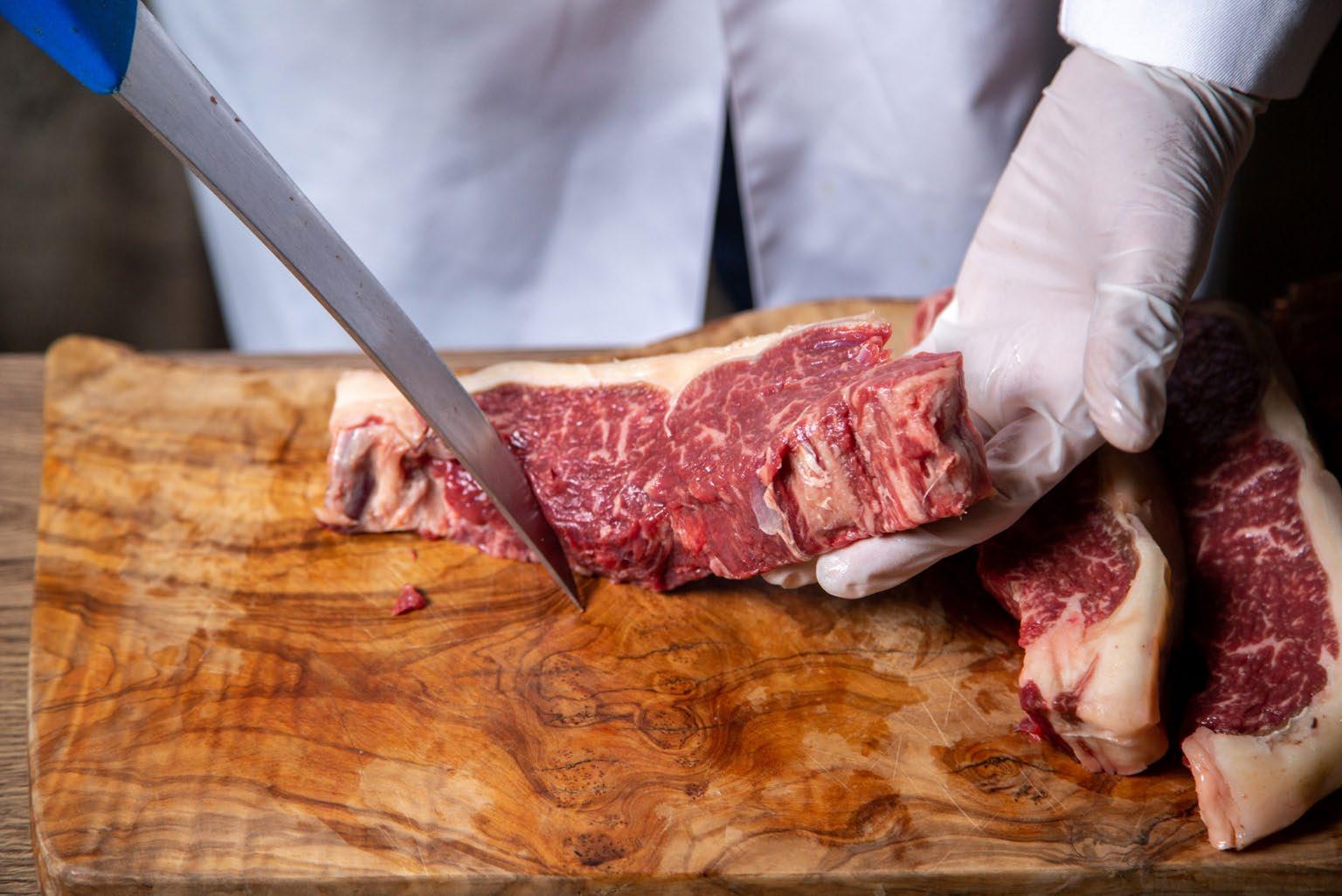
UK agricultural inputs cost surged for the second consecutive year by 28%, including a 113.5% rise in fertiliser cost in 2022, 50% increase in fuel costs and 30% in feed costs
Scotland represents 11.8% of all meat processing establishments in the UK
National Craft Butchers consultation found that more than 50% of small abattoirs are at risk of closing by 2026, due to staff shortages
Meat wholesalers have come under pricing pressures from supermarkets encouraging bypass
Meat prices increased considerably in 2021/22, fuelled by the rising costs of labour, energy and raw materials. Domestic (UK) price of beef is expected to increase at an annual rate of 2.8% over the next five years, averaging 256p/kg in 2023-24 (2% more than previous years)

The focus of the industry in the next 5 years, underpinned by the QMS strategy, is on sustainability credentials, traceability and environment
Due to vertical integration and the sheer scale of processors, many food manufacturers are bringing meat product use inhouse to achieve efficiency gains, establishing their own brands
Foodservice customers are more interested in sourcing British meat, e.g., McDonalds and Burger King. They purchase from dedicated abattoirs to ensure provenance and quality
Beef and veal are most vulnerable to decline in household consumption as disposable incomes decrease, as they are some of the most expensive products to produce and buy
Concerns for health, sustainability and fears over contamination and disease will drive growth in butchers' sales
Cost of living crisis has impacted sales of organic beef, with a reduction of sales of 12% in 2023

Life cycle analysis demonstrates that UK beef has a carbon footprint of 23 kg CO2 equivalents per kg. This is almost exactly level with the EU average of 22.1kg carbon dioxide equivalents per kg beef
For Scottish suckler beef, QMS6 estimated EIs for different production systems based on the AgreCalc Carbon Calculator. It reports that rearer/finisher units had the lowest intensity (18.4 kg CO2 equivalents per kg of meat) and hill suckler herds the highest (29.9 kg CO2 equivalents per kg of meat). However, the QMS EIs include fewer emissions sources than the UK and European figures above, and so they are not comparable
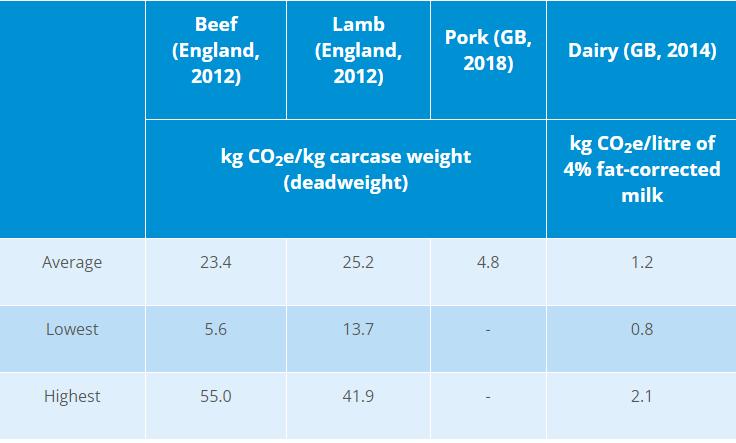

Increase customer base to avoid pricing pressures for farmers and meat processors
More certainty with the replacement of CAP subsidies with more environmentally focused payment schemes
Need for more stable supply contracts for producers
Increase market penetration of PGI Scotch beef as leading sustainable red protein available in GB
Campaign stronger against health and environmental concerns and consumption of meat
Stabilisation of input costs for fertiliser, feed and energy
Increasing attention from the public has also led to rising regulatory costs for operators
Improve profit margins within the processing sector to regain ability to invest
Growing interest in small volume direct sales and local
• Establish brand names, key to creating customer trust and loyalty

The Scottish Red Meat Resilience Group has committed to producing a Route Map to Net Zero by end of 2023. Aim is for industry to achieve Net Zero by 2045
Net Zero 2045 Scotland programmes: Climate Change Plan, Agrienvironmental Climate Scheme, Farm Advisory Scotland (FAS), Monitor Farm Programme, Net Zero and Nature Restoration Plan
QMS, AHDB and Meat Promotion Wales collated an industry toolkit of facts and figures relating to the role the red meat sector plays in three key areas: health and wellbeing, sustainability, buying local
Aim to reduce 75% of carbon emissions by 2030
Ageing agricultural workforce and succession planning required
Difficulty attracting new entrants to beef farming
Heavy reliance on non-UK workforce in processing
Staff turnover and retention in primary processing an issue
Economic
Environmental
Social
Secondary
Scottish new Agriculture Transformation Programme
RUMA, antibiotic responsible use of medicine in livestock
Sustainable Producers Networks (QMS)
R and D projects (Harbro) to decrease ammonia emissions
Research on nutritional properties of alternative protein and methane reducing potential
Having positive conversations around Meat ToolKit (QMS)
Farming
ScotEID Grasscheck Programme
Agri -Env Climate Scheme
Scotch Potential
Eligibility Cattle Checker (SPECC)
Monitor Farm Programmes
Farm Advisory Service
New Agriculture Bill
Agricalc and Carbon Positive calculators
QMS Red Meat Resilience Group
Suckler Beef Climate Group (SBCS)
Scottish Beef Climate Group
Genomic data collection at tagging (QMS)
Primary Processing
SPCA accreditation of farms and abattoirs
Processing/Added
Value
QMS, AHDB and Meat Promotion Wales Industry Toolkit
ALDI’s initiative of selling Scotch and Galloway meat only
Global Feed Cycle analysis database for life cycle assessment of ingredients
ABP’s Carbon Trust Standard
Bakkavor pledge to eliminate single use plastic by 2025
Meat Eating Quality Strategy 2022
The Scotch Butchers Club
ABP’s Nurture Nature Programme / Advantage
Beef Programme
Dunbia investment on Highlands Meat Facilities (new deboning and packaging tech)
Development of “Red
Meat Industry Net Zero Pathway”
Raising the Steak Campaign (QMS 2022)
Farming Footsteps Programme
The Scotch Beef Club
“Meat the Market” Groups “Make it Scotch” website and cookery demos (QMS)
IAAS qualificationauctioneering, welfare and management
Back British farming Campaign (AHDB)
Quality Assurance/Policy/ Regulation
QMS, RSPCA, SSPCA, FSS, Export Health Cert., Food Information REG., Food Safety Act., Red Tractor, BRC, Beef PGI Research Institutes
Moredun, Agri-Epi, SRUC, Meat Trade journals (market insight)
Primary Production
Trade Bodies
QMS, SAMW, AHDB, SFMTA, Scottish Beef Association, Scottish Craft Butchers, NFUS, National Federation of Meat and Food Traders, BMPA
Breeding, Rearing and Finishing
Primary Processing Secondary Processing
Slaughtering and Primal Cuts
Full Butchery
Processed Products
Export: wholesale, retail and foodservice Markets
UK: processors, wholesalers, retail and foodservice
Strategic investment in AV processing, cold stores
Develop UK and export markets – greater customer range for premium price and carcass balance
Need to combat labour shortages
Pricing pressures Narrow customer base Consumer health and environmental concerns
Supply Chain
Issues

References
The Scottish Red Meat Industry Profile, 2023 Edition
Scottish Agricultural Census, June 2023
Putting Our Steak in the Ground
Meat and Poultry Deep Dive Report: GB Retail, Dec23
Meat Processing in the UK
Meat Product M anufacturing in the UK
Domestic Price of Beef (April 2023)
Tackling Antimicrobial Use and Resistance in Food Production
Meat Wholesaling in the UK
Prepared Meat Manufacturing in the UK
QMS Beef Sector Strategy 2030
Scotland: The Choice for Premium Red M eat, 5-year strategy
Quality by Name, Quality by Nature - A study into red meateating quality
Positive Impact, Positive Results- QMS I ndependent I mpact Report
Celebrating the Positives of Red M eat-QMS Toolkit
Greenhouse Gas Emissions: Agriculture | AHDB
UK Beef Carbon Footprint Is EU Average | The Beef Site
Quality Meat Scotland
Scottish Government
Scottish Red Meat Resilience Group
The Knowledge Bank
UK I ndustry Report, IBIS WORLD, 2023
UK I ndustry Report, IBIS WORLD, 2023
UK Business Environment Report, IBIS WORLD
FAO,Veterinary Medicine Directorate, 2022
UK Industry Report, IBIS World 2023
UK Industry Report, IBIS World 2023
Quality M eat Scotland
Quality M eat Scotland
Quality Meat Scotland
Quality Meat Scotland
Quality Meat Scotland
Scottish Environment, Food and Agriculture Research Institutes (SEFARI) Fellowship Blog - 14 July 2020 (nfus.org.uk)

*March 2024 Reviewed regularly as new reports and statistics become available.